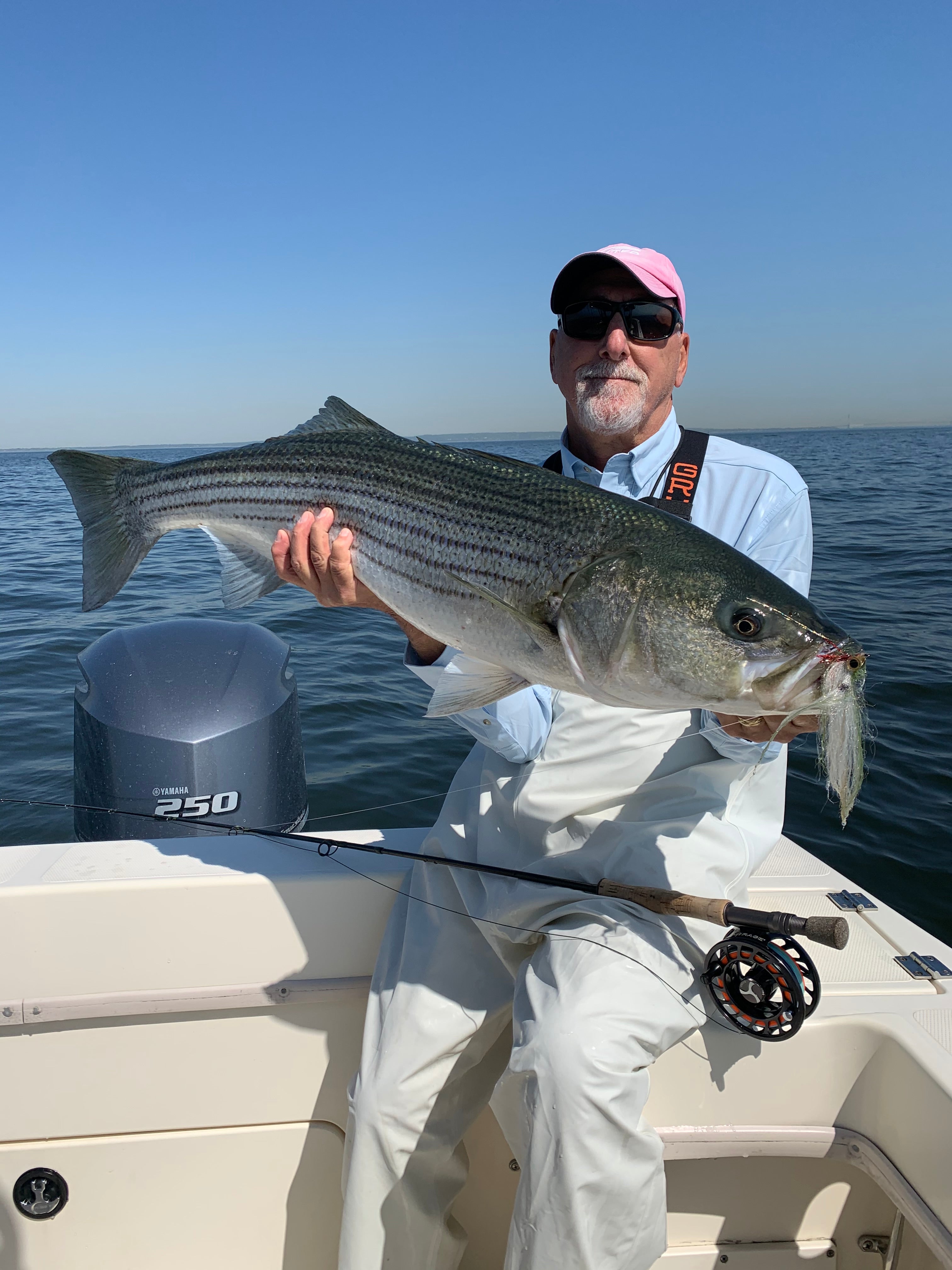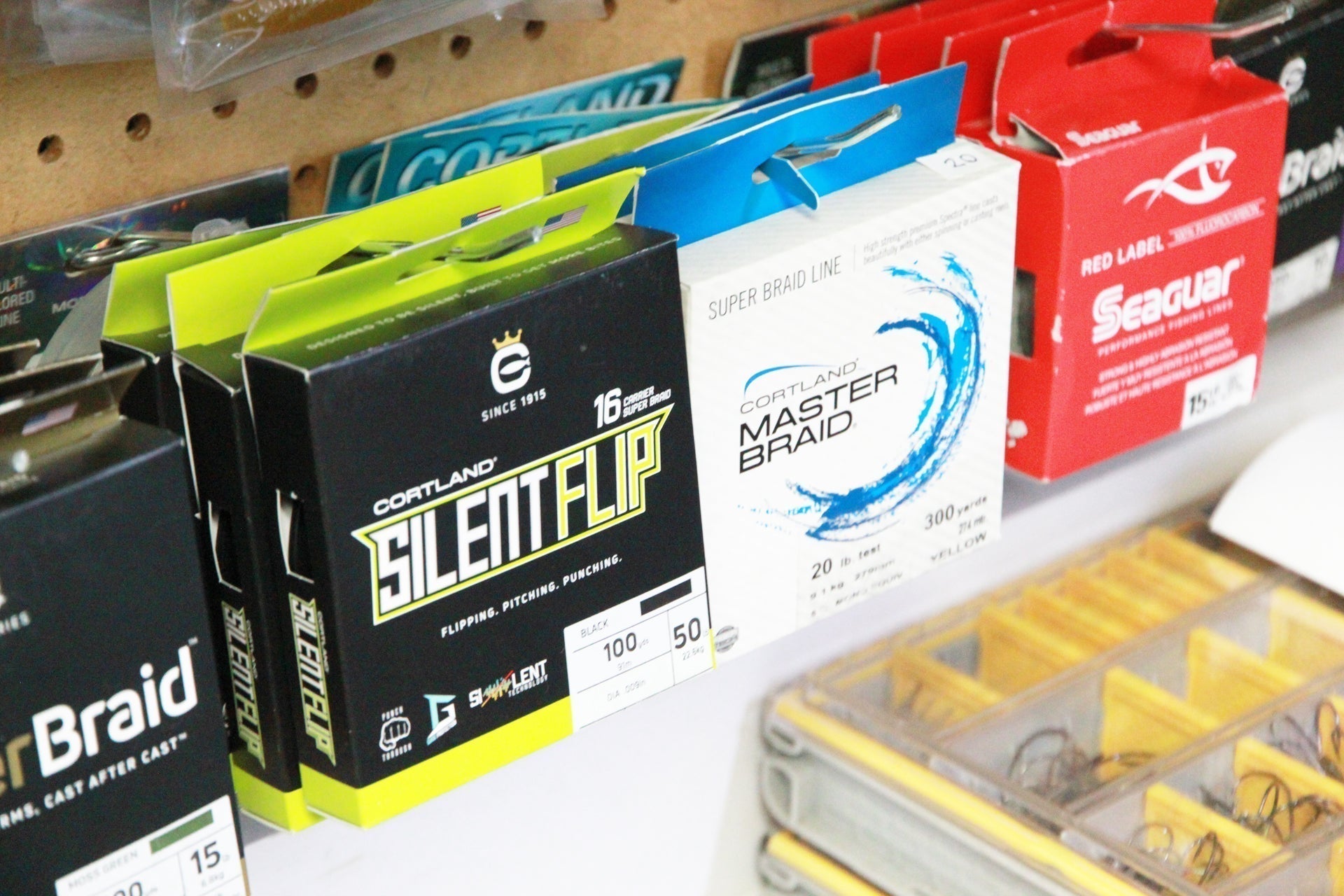Article Written by Joe Mustari. Learn More About the author below / Article Read Time: 4 Minutes
As I am writing this blog, it is 65 degrees outside and my mind keeps wandering… maybe just maybe, they’re here early. I’m talking about possibly the best springtime striper fishery on the east coast. Raritan Bay is the body of water that’s shared with both New York City and the New Jersey Bayshore. As water temperatures rise in the early spring, massive schools of bait fish enter the bay mostly made up of adult bunker, herring, silversides, and anchovies. All this bait inevitably sets the stage for huge migrating schools of striped bass.

Fly Fishing
The spring striper migration usually starts when water temps rise above 45 degrees in late March and can continue through mid to late June. Raritan Bay truly offers a great opportunity not only to catch numbers of fish but to catch your personal best on fly or light tackle. Fly fishing the springtime bass of Raritan is pretty special. For the most part, you will be throwing large flies, six to ten inches or more is standard. Beast flies, game changers, large half and half’s, hollows, and 3D’s are just a few of the big bass producers. The next part of the equation is to throw a heavy, fast sinking line. We typically fish rods from 8-10 weight matched with lines from 300 to 500 grains that have a sink rate of about 8-9 IPS (inches per second) or more, depending on the depth and current. My go-to line for this fishing is the Cortland Striped Bass Sink 8. This line is super slick and remains supple in cooler weather. A good caster can throw the whole line with a giant fly, and it sinks quickly to the feeding lane of those big bass. We are typically fishing in waters that range in depth from 10-30 feet or deeper.

The most important thing about fly fishing for Striped Bass is the presentation of the fly. It is no different when using sinking lines. I have found that it’s not just the retrieve of your fly that matters, but it is very important to have a proper angle on that retrieve. I like to retrieve the line, so it has a 45-degree angle or less where the line enters the water. Sometimes the wind and current make it challenging to find this angle, so I’ll make several casts around the boat until we find the perfect angle of retrieve. You will know when you’ve found that sweet spot because it almost feels as if the line is tugging back at you as you retrieve the fly. You are now in the perfect position to detect and come tight on even the slightest bite. Combine this with a short, erratic strip and a brief pause now and then I guarantee you will be catching not only more bass, but also bigger Striped Bass on the fly!

Plug and Jig
Light tackle plug and jig anglers are also in for some of the best Striped Bass fishing in Raritan Bay. With the growing popularity of Raritan Bay's fishery and charter fleet, the flutter spoon has taken the spotlight of being a consistent producer of stripers, especially around the bunker schools. The technique here is to run up wind and up tide of your target to start a drift. You want to drop your flutter spoon down until you feel bottom, then raise your rod sharply so the tip comes above your head. Then, lower the rod in a manner that the spoon flutters downward. You will repeat this technique until you can’t feel bottom anymore or get a bite. When the spoon gets too far away from you, reel it in and start again. The flutter spoon should be in every serious striper fisherman’s arsenal.

Another favorite artificial lure is the metal lip swimmer. This lure when casted and retrieved has a seductive side to side swimming action that the big bass cannot resist. My favorites are the ones that stay near the surface and make a wake as you retrieve them. This swimming action imitates an injured bait fish on the surface. The metal lip swimmer consistently produces some of the biggest fish of the season. I use Cortland’s 30lb Master Braid for both flutter spoons and metal lips. The sensitivity and no stretch factor of this line is incredible, and it also has the abrasion resistance you can depend on when those trophy bass try to break you off in nearby structures. Although we’ve only scratched the surface on what to expect about the upcoming spring run in Raritan Bay, the fall migration which happens from October through November and sometimes into December is even more spectacular. The Raritan Bay has become the destination of choice for serious fly and light tackle anglers looking to land that trophy striper of a lifetime.

About the author
Capt. Joe “Maz” Mustari of Mazman Charters, has been fishing Raritan Bay for more than 40 years and has been guiding fly and light tackle anglers to trophy striped bass for the last 20. If you would like to find out more about the fishing adventures of Mazman you can follow @captmaz on Instagram or Joe Mustari (Maz) on Facebook. You can also get more information at www.mazmancharters.com.
Products Mentioned in this Article
Striped Bass Sink 8Master Braid


